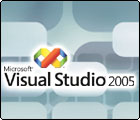
 |

|
| ActiveWin: Reviews | Active Network | New Reviews | Old Reviews | Interviews |Mailing List | Forums |
|
|
|
|
|
DirectX |
|
ActiveMac |
|
Downloads |
|
Forums |
|
Interviews |
|
News |
|
MS Games & Hardware |
|
Reviews |
|
Support Center |
|
Windows 2000 |
|
Windows Me |
|
Windows Server 2003 |
|
Windows Vista |
|
Windows XP |
|
|
|
|
|
|
|
News Centers |
|
Windows/Microsoft |
|
DVD |
|
Apple/Mac |
|
Xbox |
|
News Search |
|
|
|
|
|
|
|
ActiveXBox |
|
Xbox News |
|
Box Shots |
|
Inside The Xbox |
|
Released Titles |
|
Announced Titles |
|
Screenshots/Videos |
|
History Of The Xbox |
|
Links |
|
Forum |
|
FAQ |
|
|
|
|
|
|
|
Windows XP |
|
Introduction |
|
System Requirements |
|
Home Features |
|
Pro Features |
|
Upgrade Checklists |
|
History |
|
FAQ |
|
Links |
|
TopTechTips |
|
|
|
|
|
|
|
FAQ's |
|
Windows Vista |
|
Windows 98/98 SE |
|
Windows 2000 |
|
Windows Me |
|
Windows Server 2002 |
|
Windows "Whistler" XP |
|
Windows CE |
|
Internet Explorer 6 |
|
Internet Explorer 5 |
|
Xbox |
|
Xbox 360 |
|
DirectX |
|
DVD's |
|
|
|
|
|
|
|
TopTechTips |
|
Registry Tips |
|
Windows 95/98 |
|
Windows 2000 |
|
Internet Explorer 5 |
|
Program Tips |
|
Easter Eggs |
|
Hardware |
|
DVD |
|
|
|
|
|
|
|
ActiveDVD |
|
DVD News |
|
DVD Forum |
|
Glossary |
|
Tips |
|
Articles |
|
Reviews |
|
News Archive |
|
Links |
|
Drivers |
|
|
|
|
|
|
|
Latest Reviews |
|
Xbox/Games |
|
Fallout 3 |
|
|
|
Applications |
|
Windows Server 2008 R2 |
|
Windows 7 |
|
|
|
Hardware |
|
iPod Touch 32GB |
|
|
|
|
|
|
|
Latest Interviews |
|
Steve Ballmer |
|
Jim Allchin |
|
|
|
|
|
|
|
Site News/Info |
|
About This Site |
|
Affiliates |
|
Contact Us |
|
Default Home Page |
|
Link To Us |
|
Links |
|
News Archive |
|
Site Search |
|
Awards |
|
|
|
|
|
|
|
Credits |

|
Product:
Visual Studio 2005 Codename "Whidbey" Enterprise Developer
Edition Alpha |
Visual Basic and Visual J# Projects
|
Table Of Contents |
Both languages have something in common, the Conversion Wizard, which is more complete than previous editions and does the best to migrate code written in Visual Basic 6.0 and Visual J++ 6.0. Visual Basic "Whidbey" provides new features for rapid application development that aims to improve productivity and ease of use while delivering power. As regards Visual J# I have no experience and no interest on it so I just created a project and captured some screens.
Visual C++ Projects
Finally Visual C++ targets the whole spectrum of applications from managed code to unmanaged code, from the server to the thin-client and smart-client. It provides a dynamic development environment for creating Windows–based applications, .NET–based applications, dynamic Web applications, XML Web services and smart device applications using the C++ development language.
Distributed Service Solution
This solution is connected to the Dynamic Systems Initiative, which looks to automate how businesses design, deploy, and operate distributed systems. When a new distributed solution is created Visual Studio introduces the Application Connection Designer, which helps you to model all of the information necessary to deploy and operate a distributed system, including required resources, configuration, operational features, policies, and so on. Once finished modeling the designer can implement the distributed solution by creating new projects based on the model. This build lacks of the Logical Datacenter Designer whose function is to enable to specify settings for the operating system, network topology, security, and so on, all the way through to the hardware standards supported in the deployment environment.






















